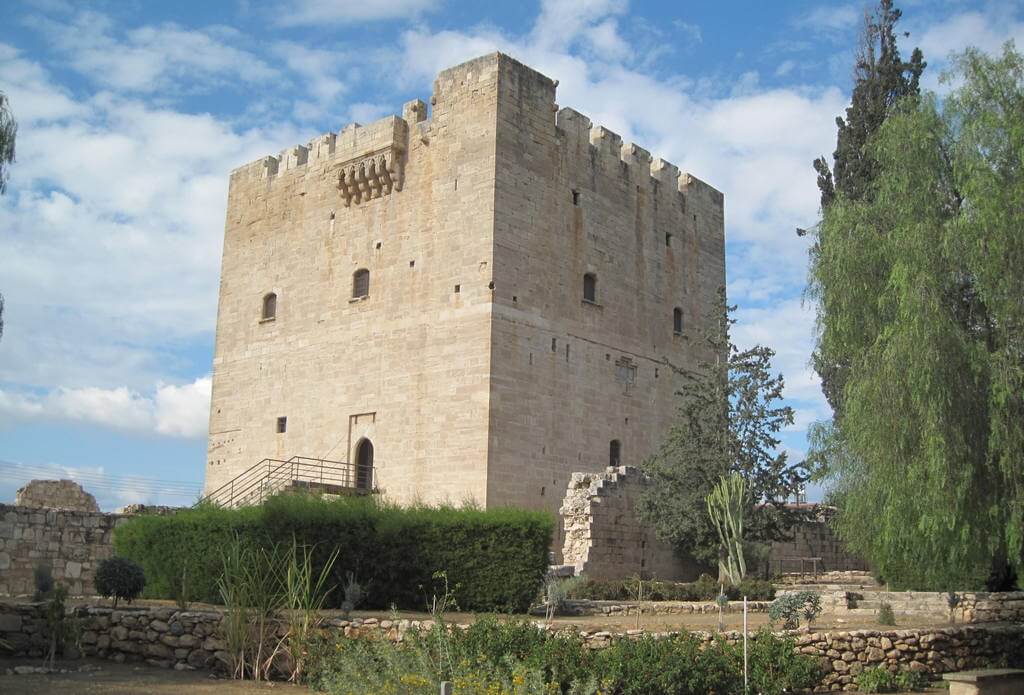The castle is located at the south edge of Kolossi village, which is situated on a coastal plain about 11 kilometres west of Limassol. It is one of the most important extant fortification works of the Frankish period, an impressive, square, well-built building comprised of three floors.
The castle was built in 1210 by the Order of St. John of Jerusalem (Knights Hospitallers) as the seat of the Supreme military commandment (Grande Commanderie). In 1306 it briefly came into the possession of the Knights Templars, who supported Amalrique of Tyre, the usurper of the throne. After the abolition of the Knights Templars in 1313, the castle of Kolossi returned to the possession of the Knights Hospitallers, but was destroyed during the raids of the Mameluke tribes in 1525-26. The Great Commander Louis de Magnac built the existing castle upon the ruins of the 13th century castle. Magnac's coat -of- arms can be seen together with the emblems of Jerusalem, Cyprus and Armenia as well as with the old Lusignan coat- of- arms in the east external side of the castle and on a fresco in the interior of the second floor.
Kolossi Castle: Sugar refinery plant
The remains of a factory that produced sugar from sugarcane, which was cultivated in large plantations in the region, are located to the east of the castle. The plantations, which date back to the 14th century, consisted of three main areas and other auxiliary areas. The primary structure is the sugar refinery, a long, narrow, stone-made, arch-covered hall. An inscription inserted in the external south side of the building informs us that it was repaired in 1591, when Pasha Murat was governor of Cyprus. To the north of this hall lie the ruins of the water mill and the water tower.



